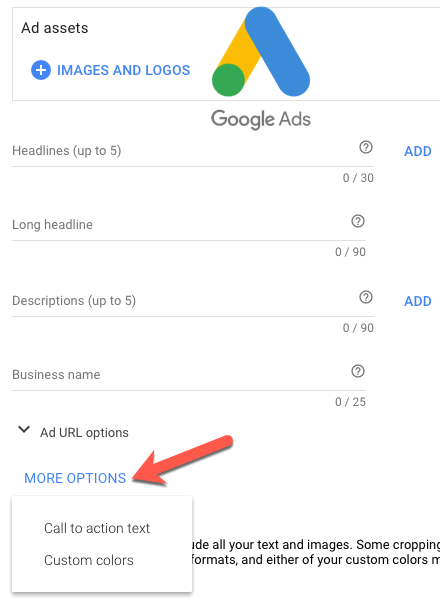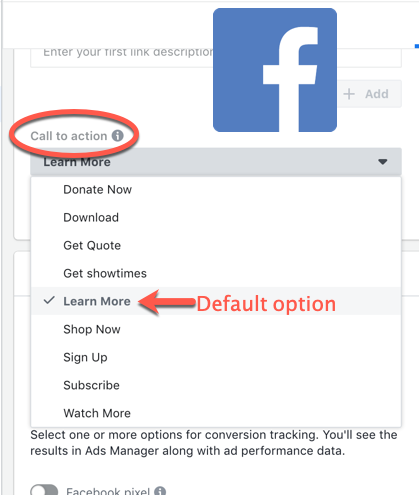A new year presents a new opportunity to review and maximize search and social PPC accounts goals as well as the calls-to-action (CTAs) we use to engage and convert potential customers.
Over time, our attention to CTAs can become stale or platform features and options can change.
CTAs link directly to our campaign’s ultimate goal – sale, lead, or others – but we’ll also need CTAs that promote that several types of conversions and drive buyers to the final sale.
Google and Facebook make this easy for advertisers to think about and implement with some automated and drop-down box selection options (we’ll get into that later).
At this time, Bing Ads does not appear to have this type of feature.
Why settle for same CTAs when there are so many other possibilities?
There are plenty of CTAs to choose from such as:
- Listen now
- Apply now
- Watch more
- Subscribe
- Download
- Get Quote
Here are a five best practices when designing CTAs for your PPC campaigns.
1. Audiences & CTA Matchup
It’s easy to use the same ads and CTA approach throughout your campaigns.
With audience targeting it will be important to put a greater emphasis on the human and intent – delivering a more personal message, rather than considering only keyword search that triggers the ads.
Different audiences will respond to different CTAs.
For example, parents versus non-parents may find different CTAs to resonate with them when searching for a product like life insurance.
2. Stick to One Goal & CTA per Campaign
Using multiple goals and CTAs in the same campaign makes it more difficult to control the budget for the various conversions when we want to optimize.
Within the campaigns, when your PPC ads are asking a consumer to take an action, it should be a laser-focused request for them.
Don’t ask them to take multiple actions in one ad.
An exception to this would be using an ad extension (see #4).
3. Reiterate Your CTA
Try to incorporate messaging in the main text ads around the CTA to reinforce it and explain the clear benefit they will get from engaging.
For example, if the goal is to generate leads through quotes, the call to action may be “get quote”.
Messaging, such as “learn how you can save with a free online quote” drives home that benefit.
4. Ad Extensions
The hard-working ad extension in Google Ads and Bing Ads is a great place to support and reinforce that strong CTA you’ve created.
Here are a few examples:
- Main CTA: download a whitepaper
- Sitelinks: One whitepaper per sitelink
- Main CTA: Shop our clearance sale
- Sitelinks: product category pages for clearance items
5. Follow the Path
Both Google Ads and Bing Ads allow for customization of paths in the display URL in ads.
In ad creation, add up to 15 characters per each field that follows the URL to make the URL more user-friendly.
A great opportunity to reinforce the CTA, especially if the core message is more complicated and you’re running out of space in the main ad.

4 PPC CTA ‘Gotchas’
Nerd alert: With all of this great opportunity to shine, however, many of the ad types have little “gotchas” that can complicate all of that planning, like using default CTAs such as “learn more” or “visit site” buttons.
1. Google Ads, Expanded Text Ads
With the addition of a third headline, a second description, and an extra 90 characters for each, it may be tempting to wrap up the ad message in these new additional lines.
The gotcha here is that these lines, may not always show.
Therefore this is not a good place to use the PPC ad’s CTA.
Instead, use the original ad lines (and tips above) until, and if, the new ones are guaranteed to be displayed in this ad format.
2. Google Ads, Responsive Display Ads
After perfecting all of the creatives in your text and images, be careful not to overlook the CTA details.
There is a hidden option under “more options” which allows you to choose the most appropriate CTA button for the ad.
The default is (Automated), like “learn more” or a simple arrow button, which Google chooses for your ad.
With the importance of a call to action, this may be one of those automation options to override to ensure the messaging is cohesive and clear.

3. Google Ads, Video Ads
Matt Southern recently covered a change in the CTA in Google video ads.
For TrueView in-stream ads (with other formats to come) the current call-to-action will be discontinued and a new call-to-action extension will replace it.
The extension is geared more towards awareness and top of funnel campaigns.
Watch for this feature to implement the most recent changes.
4. Facebook Ads, Dynamic Ads
The default is “learn more” when there are so many times that just doesn’t cut it.
If the ad text’s CTA is “register today” leaving a default button that says “learn more” is a bit confusing.
Take note of this to ensure consistent messaging.

Next Steps
- Review your current CTAs – are they organized into similar campaigns?
- Do the CTAs match up with the targeting, audiences, keywords, etc.?
- Are ad extensions, reiteration, display URL paths maximized with CTAs?
- Audit the “gotchas” for consistency and best messaging.
Bonus: Adam Proehl wrote about B2B goals and CTAs in this recent post. Read it to help pump up your knowledge and spur ideas.
More Resources:
Image Credits
All screenshots taken by author, January 2019
Subscribe to SEJ
Get our daily newsletter from SEJ’s Founder Loren Baker about the latest news in the industry!
